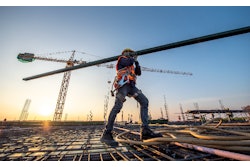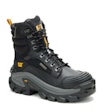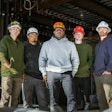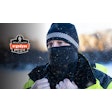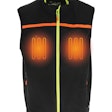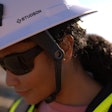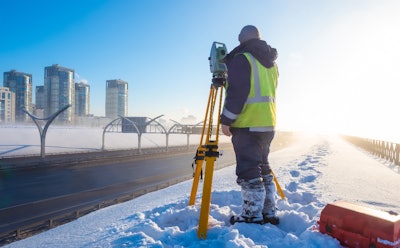
Base layer pants – also known as long underwear, thermal underwear, leggings, and long johns – are an apparel item favored by construction workers when working jobs in cold temperatures.
The pants are worn as the first layer upon which a middle layer and outer layer is added to provide the ultimate protection and versatility in changing weather conditions.
Choosing Base Layer Pants
Base layer pants are designed to be form fitting. The snug fit allows for easy layering with additional clothing.
Base layer pants are designed to keep the body warm by trapping heat close to the skin and maintaining dryness by wicking away moisture, which is the primary purpose they serve. The accumulation of sweat can cause a body to feel cold and uncomfortable in low temperatures and as such, that may compromise job performance and efficiency.
Body heat is retained through the insulative layers of base layer pants. Air trapped between the skin and fabric serves as insulation to keep the body warm in cold weather.
Typical base layer pants are made from natural fiber such as merino wool, which is considered softer, more odor resistant, and provides good insulation. Cotton may not be a good choice for base layer pants as it may absorb sweat. Other materials from which base layer pants are made can include synthetic materials such as polyester or nylon. These materials are ideal for keeping sweat away from the skin though their moisture-wicking properties. They also can help prevent chafing.
While base layer pants are insulating, they also can be breathable, allowing moisture and heat to escape and prevent the body from overheating during periods of strenuous activity on the jobsite.
Materials and Weight
Construction workers should consider the weight of the material when choosing base layer pants that will stand up to the task. Lightweight base layer pants typically weigh less than seven ounces and are often preferred for work in mild temperatures or in high-activity endeavors. Merino wool base layer pants in this weight range are often referred to as ‘cool-weather merino.’
Midweight base layer pants weigh between seven and 12 oz. and are thought to be ideal for moderate activity levels in colder temperatures.
For the warmest option, construction workers may want to choose heavyweight base layer pants. These work pants weigh more than 12 oz. and are often chosen for low activity situations or very cold temperatures. Some construction work apparel brands also make base layer pants that include reinforced knees, a reinforced seat for durability, or heating elements for extra warmth.
Construction workers also should seek out pants with flat and very few seams and small flat stitches, which can minimize friction and chafing. Antimicrobial fabrics treated with a chemical or antimicrobial finish during the finishing stage of the textile production process go beyond preventing the growth of bacteria as is offered through antibacterial treatments to provide further protection against fungi and algae.
Before deciding which type of base layer pants to purchase, construction workers should try them on with other layers to ensure they will enable a full range of motion on the jobsite without bunching up or riding up the leg. It may be ideal to purchase a few pair of different weights for various temperature ranges.
Learn More: What are the Different Types of Materials for Construction Work Pants?
Base Layer Pants and Construction Work
As with all other construction work apparel, safety comes first. Workers should consult the jobsite’s safety manager to ensure the base layer pants comply with safety regulations.
Case in point: the need in some job tasks for fire- and flame-resistant (FR) work clothing. Wearing arc-rated (AR) layers of clothing not only provides warmth, but also ensures protection from burns and injuries. A jobsite safety manager can help determine if the base layer meets Occupational Safety and Health Administration guidelines for flames, sparks, electrical arcs, and heat.
Some materials such as synthetics could melt or catch fire, even when wearing FR approved outerwear. Merino wool is known to be fire resistant. Base layer pants that are AR and FR feature an Arc Thermal Performance Value (ATPV) rating indicating the maximum heat the fabric can absorb before the person wearing it suffers second-degree burns.
Follow the base layer pants manufacturer’s directions for maintenance. Wear and tear can compromise the performance of base layer pants, at which point they should be replaced.


